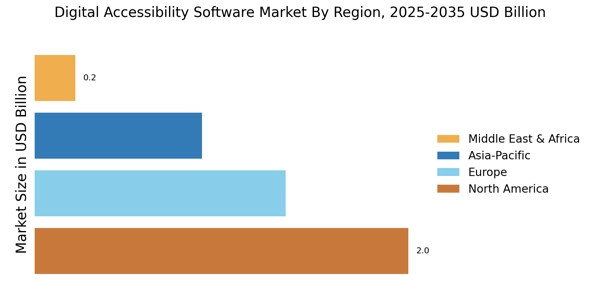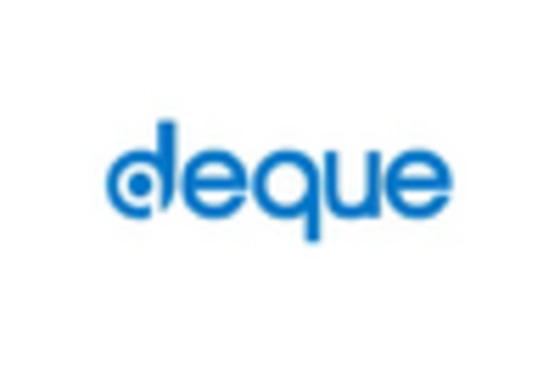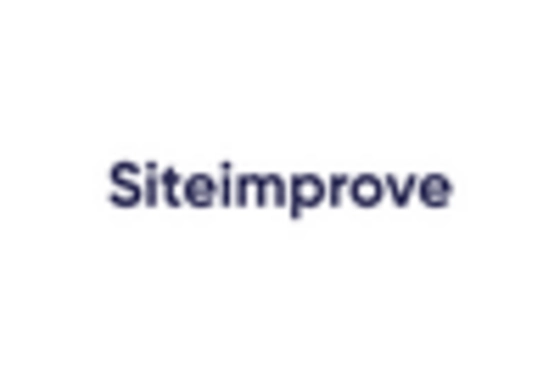Increased Focus on Inclusive Design
The increased focus on inclusive design is reshaping the Digital Accessibility Software Market. Organizations are beginning to understand that accessibility is not merely a compliance issue but a fundamental aspect of user experience. This shift in perspective is driving the development of software that prioritizes inclusivity from the outset. Market data indicates that companies investing in inclusive design practices are likely to see a 25% increase in user engagement and satisfaction. As more businesses recognize the value of catering to diverse user needs, the demand for digital accessibility software is anticipated to grow, reflecting a broader commitment to creating equitable digital environments.
Rising Awareness of Accessibility Needs
The increasing awareness of accessibility needs among businesses and organizations is a pivotal driver for the Digital Accessibility Software Market. As more entities recognize the importance of inclusivity, they are actively seeking solutions that ensure compliance with accessibility standards. This trend is reflected in the growing number of organizations adopting accessibility policies, which has led to a surge in demand for digital accessibility software. According to recent data, the market is projected to grow at a compound annual growth rate of over 20% in the coming years, indicating a robust shift towards prioritizing accessibility in digital platforms. This heightened awareness not only fosters a more inclusive environment but also enhances brand reputation, thereby driving further investment in accessibility solutions.
Corporate Social Responsibility Initiatives
Corporate social responsibility (CSR) initiatives are emerging as a key driver for the Digital Accessibility Software Market. Companies are increasingly recognizing the importance of social responsibility in their business models, leading to a commitment to accessibility as part of their CSR strategies. This shift is not only about compliance but also about enhancing brand loyalty and customer trust. Market analysis indicates that organizations with strong CSR commitments are more likely to invest in digital accessibility solutions, with a potential increase in market share by up to 15%. As businesses strive to align their operations with social values, the demand for digital accessibility software is expected to rise, reflecting a broader societal commitment to inclusivity.
Growing Demand from Educational Institutions
The growing demand from educational institutions is a significant driver of the Digital Accessibility Software Market. As schools and universities increasingly adopt online learning platforms, the need for accessible educational resources has become paramount. Institutions are required to comply with various accessibility standards to ensure that all students, including those with disabilities, can access educational materials. Recent statistics suggest that the education sector accounts for approximately 30% of the total market share in digital accessibility software. This trend is likely to continue as educational institutions prioritize inclusivity, thereby driving further investment in accessibility solutions.
Technological Advancements in Software Development
Technological advancements in software development are significantly influencing the Digital Accessibility Software Market. Innovations such as artificial intelligence and machine learning are being integrated into accessibility tools, enhancing their functionality and user experience. These technologies enable software to automatically identify and rectify accessibility issues, making it easier for organizations to comply with regulations. The market has seen a notable increase in the adoption of these advanced tools, with estimates suggesting that the integration of AI could improve accessibility compliance rates by up to 30%. As organizations strive to keep pace with technological changes, the demand for sophisticated digital accessibility solutions is expected to rise, further propelling market growth.


















Leave a Comment